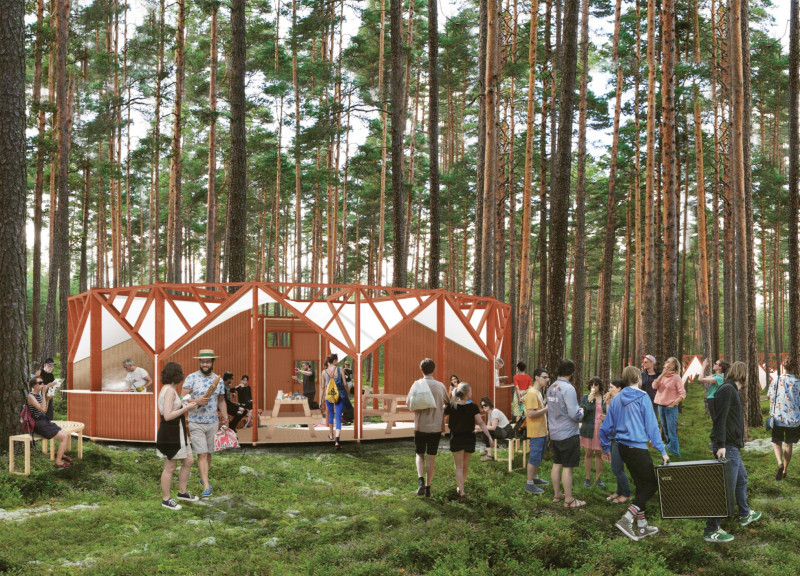5 key facts about this project
"The Courts of Māra" is a contemporary architectural project designed to support the Sansusi music festival in Latvia. Located within a dense forest, the design creates a modular, flexible gathering space for cultural events and community interactions. The functionality of the structure caters to a range of activities, prioritizing adaptability to accommodate various audience sizes and event formats. This integration within a natural setting highlights a contemporary approach to architecture that emphasizes sustainability and local cultural identity.
Unique Design Approaches in Modular Architecture
The project employs a modular design strategy that sets it apart from conventional event spaces. This method allows for the reconfiguration of the interior based on specific event requirements, whether small gatherings or larger performances. The central performance area is circular, encouraging communal engagement and interaction, which is key to the user experience of the festival. Surrounding this area are various modular units that provide services such as food and beverage options, fostering informal social engagement and enhancing the overall atmosphere.
Sustainability is fundamental to the project's design philosophy. The materials selected, including locally sourced wood, concrete blocks, steel brackets, canopy fabric, bamboo, and glass, all serve ecological considerations and durability. Lightweight fabric canopies provide shelter while contributing to the intimate ambiance of performances. By utilizing sustainable materials and construction practices, the project reinforces environmental stewardship and reduces its carbon footprint, making it a model for future architectural endeavors.
Integration with Natural Elements
The architectural design expertly integrates with the surrounding forest ecosystem, creating a seamless connection between the built environment and nature. The spatial organization allows visitors to experience the natural beauty of the landscape while engaged in cultural activities. Large glass sections facilitate transparency, maximizing natural light and enhancing the spatial quality of the interior. This connection to the environment is not merely aesthetic; it reinforces the project's commitment to sustainability and community well-being.
At its core, "The Courts of Māra" offers significant insights into modern architectural design, exploring the intersections of flexibility, culture, and ecology. The project stands as a testament to how spatial design can promote community interaction while respecting the environment. For those interested in a deeper understanding of the architecture, exploring the architectural plans, sections, designs, and ideas of this project will provide essential insights into its thoughtful execution.


























